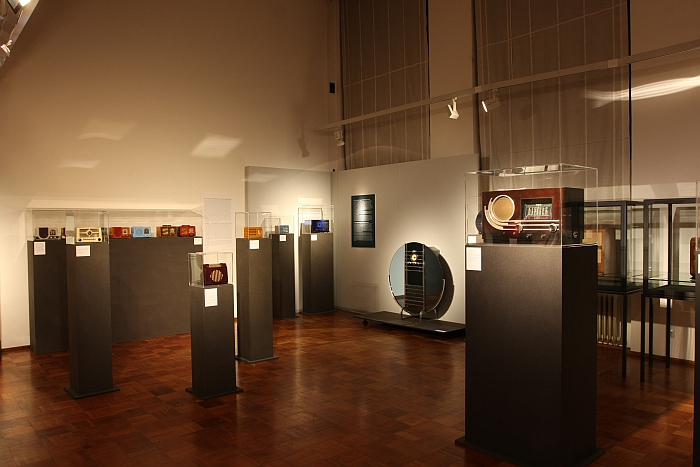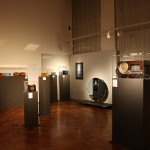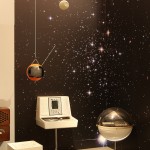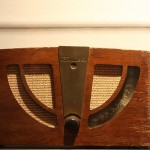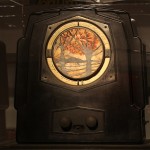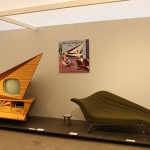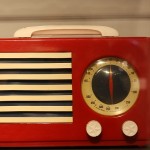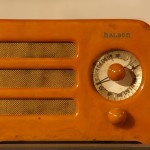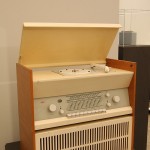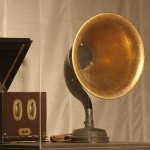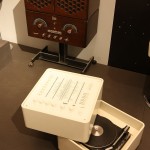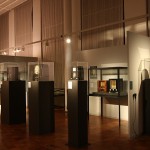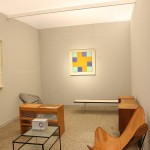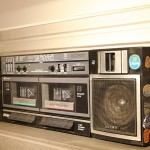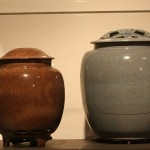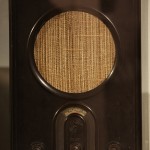RADIO Days. Tube Radios, Design Classics, Internet Radio at the Museum für Angewandte Kunst Cologne
Radio is without question the most universal and democratic of all media, in many ways we are all raised on radio. Who doesn’t remember lying in bed with your covers pulled up over your head? Radio playin’ so no one can see. And when things haven’t gone so well have we not all sat alone and watched its light, our only friend through teenage nights. Over the years, and regardless of at which station on life’s highway we’ve found ourselves, radio has always been there for us, made us laugh, made us cry, made us feel like we could fly.
Until June the Museum für Angewandte Kunst Köln, MAKK, is honouring the radio with the exhibition, Radio Days. Tube Radios, Design Classics, Internet Radio
“With radio the technology came first, but there were no established formal standards for radio sets”, explains exhibition curator Dr. Romana Breuer, “with cars for example we had the horse drawn carriage which served as a formal model, but with radios the form giving process had to be developed from scratch”.
Presenting some 246 exhibits, including 199 radio sets, Radio Days aims to chart this formal development of radio design, or perhaps better put aims to chart the numerous paths taken in the course of this formal development of radio design, from the very first, very technical objects of the 1920s until the app driven digital radio world of today.
Arranged, largely, chronologically Radios Days presents objects as varied and delightful as, for example Philips’ so-called Frying Pan speaker from 1928, the Emerson Patriot 400 series by Norman Bel Geddes, the Wega Stereo Bar 3300 by Verner Panton, or the outrageously monstrous “Komet” concert console from the late 1950s, an age when it appears everyone just wanted to dance to the song they’re playin’ on the radio, to dance, dance, dance to the music on the radio. Something an object such as the Komet allowed everyone to do with a previously unimaginable sense of style, majesty and immortality.
In addition to the radio sets themselves an important component of Radio Days is the 11 listening posts which present seminal radio moments and music from across the decades, including a report from the first car race at the Nürburgring, Glenn Miller playing “In the mood” and the first official German radio broadcast from October 29th 1923. According to curator Romana Breuer, during the preparation for the exhibition everyone, but everyone, kept telling her that she had to, but had to, include Orson Welles legendary 1938, “The War of the Worlds” broadcast, So she didn’t. Instead she made a typical Cologne decision and included the conceptually similar 1974 radio play “Der Kölner Dom stürzt ein” – “Cologne Cathedral is collapsing”. Which it goes without saying is the sort of attitude that is always, but always, going to get our respect.
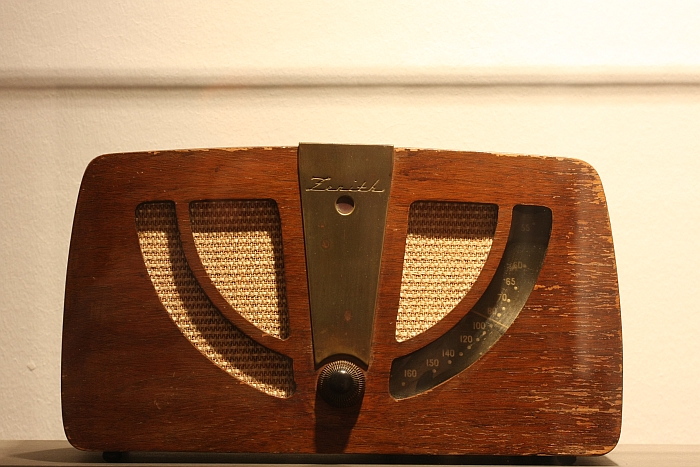
The 6 D 030 Z by Charles & Ray Eames for Evans for Zenith Radio, as seen at Radio Days. Tube Radios, Design Classics, Internet Radio, the Museum für Angewandte Kunst Cologne
Radio Days is in many ways as much a stroll through the cultural epochs of the past century as it is through the history of radio design: through the apparently unremarkable object that is the radio set the exhibition explores those material, technological and social changes which have defined the past 100 years and by extrapolation how contemporary society attempted to understand and harness the new possibilities. Truly dangerous Art Deco designs of late 1920s and early 1930s; charmingly subtle moulded plywood radio cases by Charles and Ray Eames; the Volksempfänger championed by Joseph Goebbels to help him transport the Nazi’s propaganda into every living room; the unapologetically quadratic post war gute Form of Dieter Rams and Hans Gugelot for Braun; the space age fantasies of the 1960s & 70s; the questionable ubiquitousness of “streamlining”; the endless possibilities, if not endless good taste, offered by moulded plastic and increasingly minuscule technology; the contemporary radio set as a virtual entity. And in doing so Radio Days neatly demonstrates that far from being a companion unobtrusive, radio has been a very present, active partner and chaperon.
As an exhibition Radio Days however doesn’t always get the feeling right. The weakest point of an otherwise interesting and informative show is without question the exhibition design concept. While objects in glass display cases is in many ways unavoidable with such an exhibition, enclosing a large part of the exhibition in another box as the organisers have done with the room-within-a-room housing the years 1950 to the present day, gives the impression of a more restricted exhibition that one really has. Radio waves travel from the deeps of space, from the transmitter, to the receiver, across the ether, that is the wonder of radio, it gives one a freedom: enclosed in a box looking at boxes within boxes tends to focus attention on the limitations of the presentation form and is as claustrophobic as it is uninspiring. It simply doesn’t motivate. Radio waves have life, bearing a gift beyond price. And while that does come across from the exhibition, it is sadly not as obvious, self-evident or celebratory as one might hope.
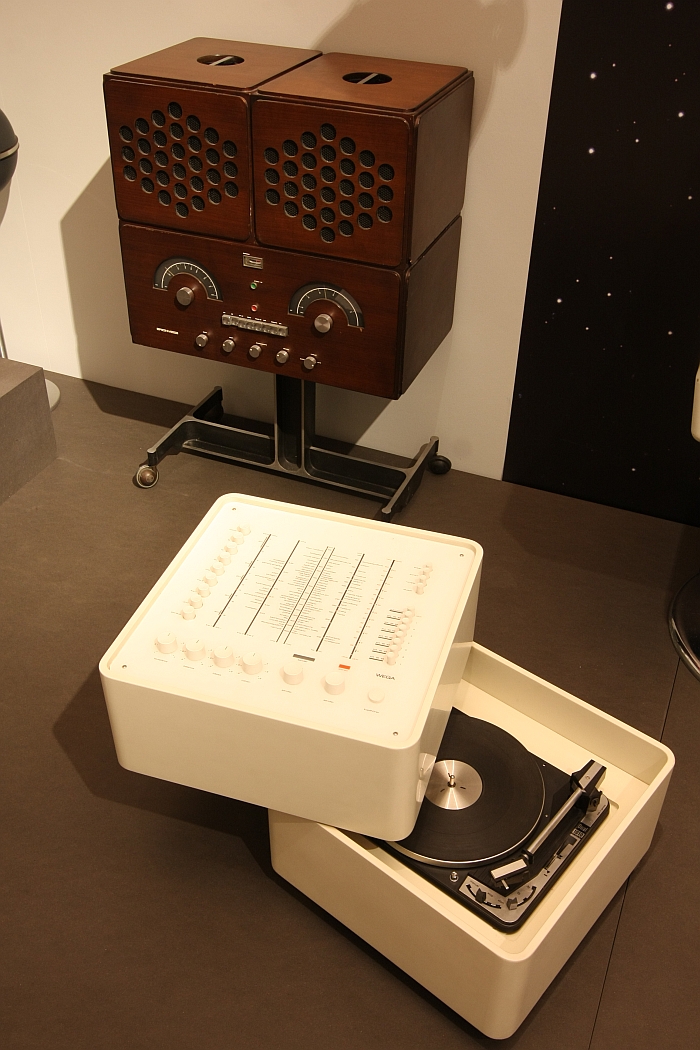
RR126 OFST, Deposito by Achille & Pier Giacomo Castiglioni & the Wega Stereo Bar 3300 by Verner Panton, as seen at Radio Days. Tube Radios, Design Classics, Internet Radio, the Museum für Angewandte Kunst Cologne
Radio Days begins with a 1924 Funk-D-Zug from Siemens & Halske with all its sockets, valves & baubles and ends with a German radio app by Sebastian Kutscher, a work with just as many technical baubles, you can still turn the dials with your hand, if digitally and so less pleasing tactilely.
A contrast that poses the obvious question as to what the future holds for our humble radio?
If Radio Days teaches us that radio design has been a mirror of social, cultural, technological and material changes, then surely in our modern, computer age the radio set will vanish, become replaced by the tablet and smartphone app or computer live stream.
Surely!
Having viewed Radio Days we’re not so certain.
Despite the widely held belief that video killed the radio star. It didn’t. For despite music changing throughout the years, we still need to use our ears: and not just for music but also for radio plays, news, documentaries, comedy, sport, political debate, even gardening tips. Far from being radio nowhere, a drone, bouncing off a satellite, radio remains in all cultural facets as valid and vibrant a format today as it ever was. If not more so.
And whereas digital technology makes our life easier in so many ways, it doesn’t replace that intrinsic human desire for value, not value in financial terms but in terms of quality, meaning, substance and honesty.
In terms of listening to the radio, for some that means a desire to hear audio output in an acceptable quality, for all the convenience of radio on a telephone no one ever said it sounded good; for others it will be a desire for an object which reflects the importance and respect they place in and have for what they hear; for some it will be the necessity of relaxing without laptop, tablet or phone; for some a combination of these and/or other reasons.
Regardless however of why, we suspect that just as the future will see increased sales of well designed, well conceived books, we also foresee a future of intelligently designed, functionally thought through and aesthetically honest radio sets.
In terms of design it might just be that radio is genuinely still to have its finest hour.
In addition to the exhibition the MAKK is hosting a varied fringe programme, and for all in Cologne during the IMM furniture trade fair and Passagen interior design week, entry to Radio Days is free until Sunday January 24th
Full details can be found at: www.makk.de
- Radio Days. Tube Radios, Design Classics, Internet Radio at the Museum für Angewandte Kunst Cologne
- Radio Days. Tube Radios, Design Classics, Internet Radio at the Museum für Angewandte Kunst Cologne
- 6 D 030 Z by Charles Ray Eames for Evans for Zenith Radio, as seen at Radio Days. Tube Radios, Design Classics, Internet Radio, the Museum für Angewandte Kunst Cologne
- All Electric Consolette RS 3 by J K White for Erik Kirkham Cole, as seen at Radio Days. Tube Radios, Design Classics, Internet Radio, the Museum für Angewandte Kunst Cologne
- Komet Konzerttruhe from Kuba-Imperial, as seen at Radio Days. Tube Radios, Design Classics, Internet Radio, the Museum für Angewandte Kunst Cologne
- 400 – 3 Patriot by Norman Bel Geddes for Emerson, as seen at Radio Days. Tube Radios, Design Classics, Internet Radio, the Museum für Angewandte Kunst Cologne
- A 5 Dwarf by J. Samson Spencer for Halson, as seen at Radio Days. Tube Radios, Design Classics, Internet Radio, the Museum für Angewandte Kunst Cologne
- Atelier 1 Control unit Dieter Rams for Braun, as seen at Radio Days. Tube Radios, Design Classics, Internet Radio, the Museum für Angewandte Kunst Cologne
- A Horn speaker from British Thomson-Houston, as seen at Radio Days. Tube Radios, Design Classics, Internet Radio, the Museum für Angewandte Kunst Cologne
- RR126 OFST, Deposito by Achille & Pier Giacomo Castiglioni & the Wega Stereobar 3300 by Verner Panton, as seen at Radio Days. Tube Radios, Design Classics, Internet Radio, the Museum für Angewandte Kunst Cologne
- Radio Days. Tube Radios, Design Classics, Internet Radio at the Museum für Angewandte Kunst Cologne
- A recreation of the Braun atelier show apartment, as seen at Radio Days. Tube Radios, Design Classics, Internet Radio, the Museum für Angewandte Kunst Cologne
- Sony CFSW 365 S, as seen at Radio Days. Tube Radios, Design Classics, Internet Radio, the Museum für Angewandte Kunst Cologne
- Speaker Cello and Zauberdose, as seen at Radio Days. Tube Radios, Design Classics, Internet Radio, the Museum für Angewandte Kunst Cologne
- Volksempfänger VE 301 Wn by Walter Maria Kersting, as seen at Radio Days. Tube Radios, Design Classics, Internet Radio, the Museum für Angewandte Kunst Cologne
Tagged with: cologne, köln, MAKK, Radio, RADIO Days Tube Radios Design Classics Internet Radio
